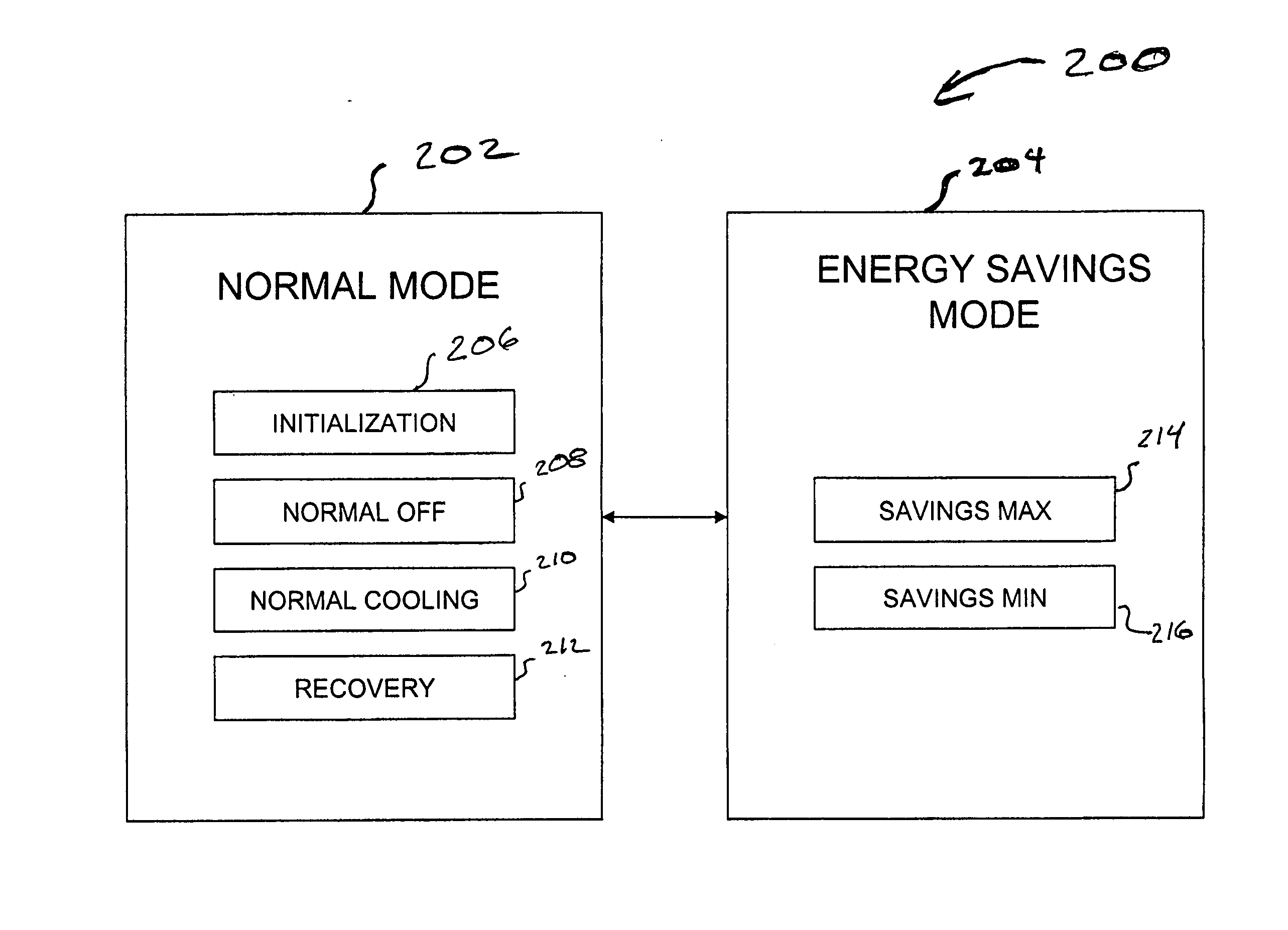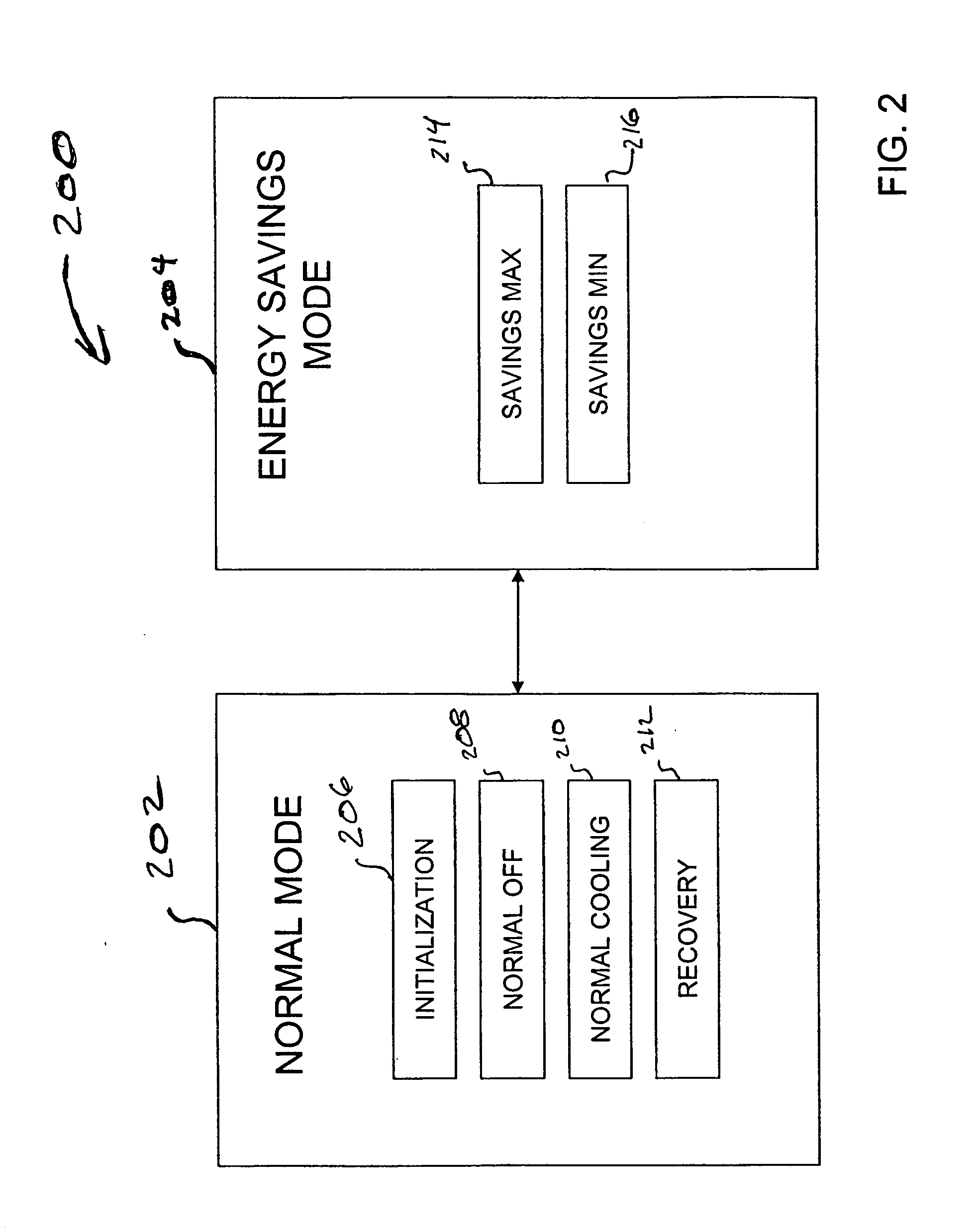Method and apparatus for power management control of a cooling system in a consumer accessible appliance
a technology for power management and cooling systems, applied in the field of methods, can solve the problems of large power consumption of cooling systems, inability to cool the interior of appliances much, and rise in temperature of appliances,
- Summary
- Abstract
- Description
- Claims
- Application Information
AI Technical Summary
Problems solved by technology
Method used
Image
Examples
Embodiment Construction
[0019]FIG. 1 depicts an exemplary appliance 100. Illustrated appliance 100 includes a housing 101 having a product display area 102 with an interior 104. Appliance 100 is depicted with a plurality of products within product display area 102 (represented by products 108a-o positioned on shelves 110a-d). Exemplary products, by non-limiting example, include canned or bottled beverages, other ingestible items, or essentially any item that would benefit from refrigeration.
[0020] Interior 104 of appliance 100 (and, thus, products 108) may be accessed through one or more doors coupled to the housing 101 (represented by a first door 112 and a second door 114 in the illustrated embodiment), each door having an open state and a closed state. Doors 112 / 114 are illustrated in their closed state. In an exemplary embodiment, doors 112 / 114 are positioned within a track defined by a lower track 116 and an upper track 118. Doors 112 / 114 may be opened / closed by sliding doors 112 / 114 within the track...
PUM
 Login to View More
Login to View More Abstract
Description
Claims
Application Information
 Login to View More
Login to View More - R&D
- Intellectual Property
- Life Sciences
- Materials
- Tech Scout
- Unparalleled Data Quality
- Higher Quality Content
- 60% Fewer Hallucinations
Browse by: Latest US Patents, China's latest patents, Technical Efficacy Thesaurus, Application Domain, Technology Topic, Popular Technical Reports.
© 2025 PatSnap. All rights reserved.Legal|Privacy policy|Modern Slavery Act Transparency Statement|Sitemap|About US| Contact US: help@patsnap.com



